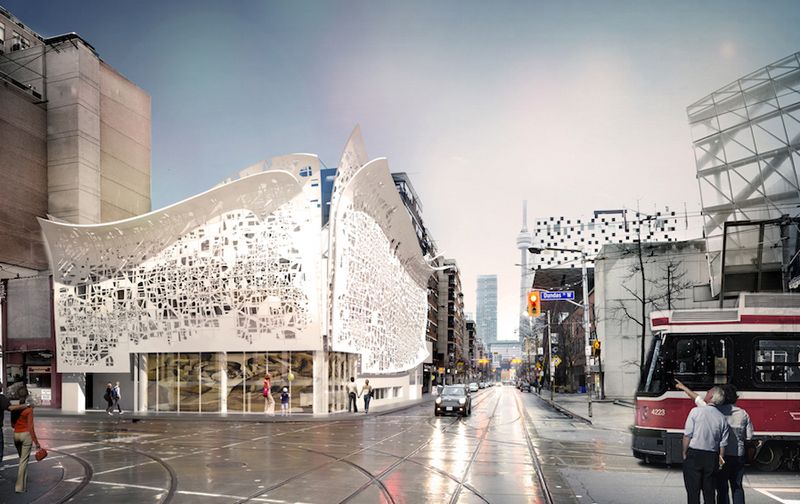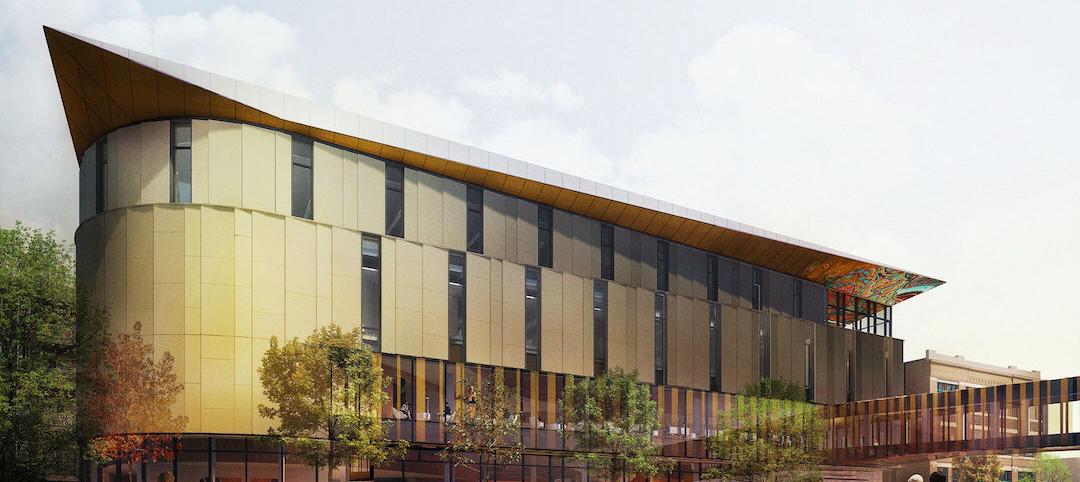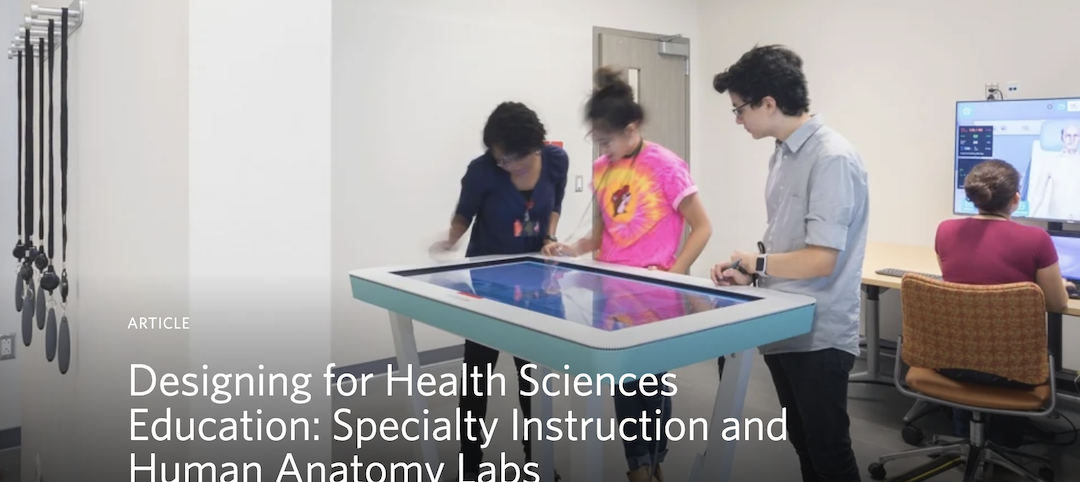OCAD U, formerly known as the Ontario College of Art and Design, wants the surrounding community to reimagine its main office building as an interactive gateway for its campus in Toronto.
To achieve that goal, the university commissioned a $6 million renovation for that 16,300-sf building, whose exterior will be shrouded with a diaphanous white veil of water-jet-cut aluminum panels on metal framing secured by structural steel outriggers.
The façade that Bortolotto Design Architect has proposed would fan out from the edges of the building, like it’s opening up to visitors. The veil will also provide street-level views of student artwork.
ArchDaily reports that the college’s Digital Media Research Lab is developing an app to read information from specific sections of the façade, so pedestrians will be able to learn about different local artists.
OCAD U is rebranding the building as The Rosalie Sharp Pavilion, named after benefactors Rosalie and Isadore Sharp, who donated $3 million of the project’s budget. The college is paying the rest. The office building’s interior space will be converted into a flexible-use, student-oriented facility that includes minimalist studios and rooms for meetings and events.
The Building Team on this renovation also includes Blackwell (SE), ENSO Systems (mechanical/electrical engineer), and Halsall Associates (sustainability consultant). The contractor has yet to be chosen, and the groundbreaking date still needs to be set.
Bortolotto reportedly came up with this patterned veil design by mapping data about Toronto’s artistic community in order to position OCAD U as the nucleus of that activity, and as a cross-disciplinary, collaborative institution.
“The pattern inscribed in the scrim is defined as the notion of OCAD U as densely embedded within the urban fabric of the city,” Tania Bortolotto, the firm’s president, told Daily Commercial News.
The Arch Daily report notes that the peel-away edges of the pavilion “gesture” toward the nearby Art Gallery of Ontario, designed by Frank Gehry; as well as the university’s Sharp Centre for Design, designed by aLL Design’s Will Alsop.


Related Stories
University Buildings | Jan 11, 2022
Designing for health sciences education: supporting student well-being
While student and faculty health and well-being should be a top priority in all spaces within educational facilities, this article will highlight some key considerations.
University Buildings | Jan 6, 2022
New Facility completes at Drexel University College of Medicine at Tower Health
SLAM designed the project.
University Buildings | Jan 4, 2022
Henning Larsen to design new university building in the Alps
The project will be Henning Larsen’s first in Austria.
University Buildings | Dec 8, 2021
The University of Michigan’s Ford Robotics Building completes
HED designed the project.
University Buildings | Nov 23, 2021
The University of North Carolina at Charlotte’s new residence hall begins construction
KWK Architects designed the project.
University Buildings | Nov 18, 2021
Pratt Institute Residence Hall completes, opens
Hanrahan Meyers Architects, in collaboration with Cannon Design, designed the project.
Designers / Specifiers / Landscape Architects | Nov 16, 2021
‘Desire paths’ and college campus design
If a campus is not as efficient as it could be, end users will use their feet to let designers know about it.
University Buildings | Nov 15, 2021
Red River College Polytechnic’s new Manitou a bi Bit daziigae opens
Diamond Schmitt and Number TEN Architectural Group designed the project.
Cladding and Facade Systems | Oct 26, 2021
14 projects recognized by DOE for high-performance building envelope design
The inaugural class of DOE’s Better Buildings Building Envelope Campaign includes a medical office building that uses hybrid vacuum-insulated glass and a net-zero concrete-and-timber community center.
University Buildings | Sep 28, 2021
Designing for health sciences education: Specialty instruction and human anatomy labs
It is a careful balance within any educational facility to provide both multidisciplinary, multiuse spaces and special-use spaces that serve particular functions.

















